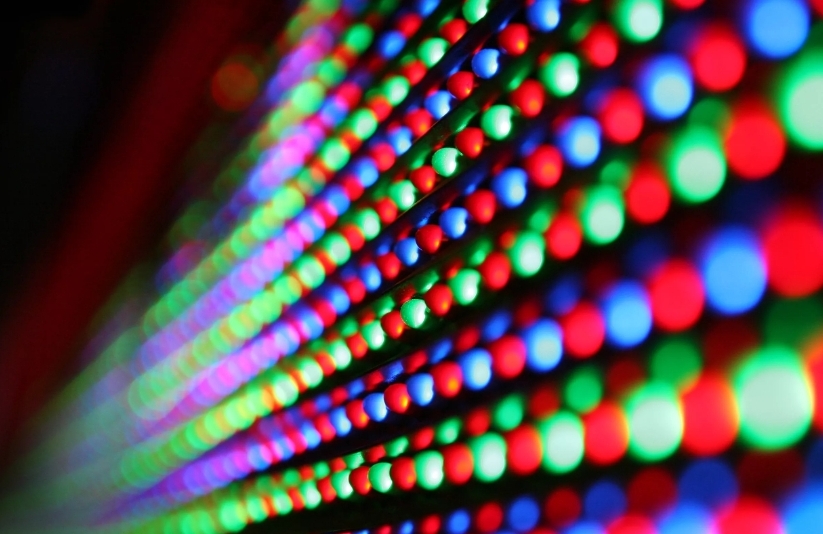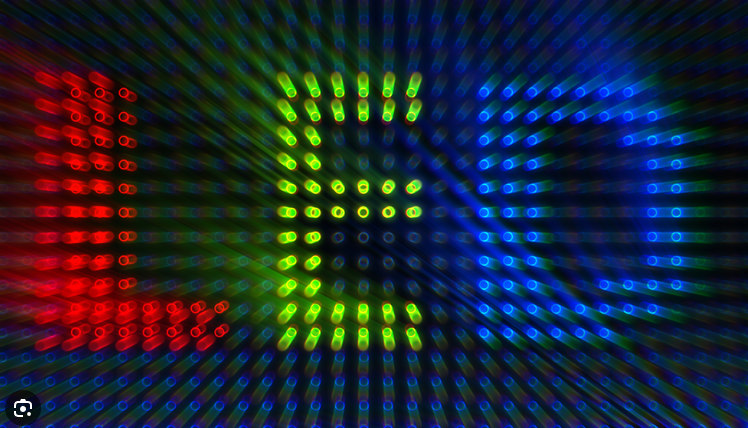LEDs (Light Emitting Diodes) are widely used in various sectors due to their versatility, high brightness and energy efficiency. LEDs come in different types, each with its own features and usages. Below are some common types of LEDs.

LED screen, commonly seen usage of LEDs
Standard LEDs:
Standard LEDs are the most basic type of LED. They emit light in a single color, such as red, green, blue, yellow, or amber. They are compact, energy-efficient, and have a long lifespan. Standard LEDs are commonly used in indicator lights, automotive lighting, signage, and decorative lighting.
High-Power LEDs:
High-power LEDs are designed to emit a significantly higher amount of light compared to standard LEDs. They are available in different colors and offer greater brightness levels. High-power LEDs are used in applications that require intense illumination, such as automotive headlights, outdoor lighting, and large-scale displays.
RGB LEDs:
RGB LEDs contain three separate LED chips in red, green, and blue colors. By controlling the intensity of each primary color, RGB LEDs can produce millions of different colors. They are commonly used in displays, decorative lighting, stage lighting, and color-changing applications.
SMD LEDs:
SMD (Surface-Mount Device) LEDs are compact LEDs designed for surface-mounting onto circuit boards. They have small sizes and are available in various shapes, such as rectangular or circular. SMD LEDs are used in a wide range of applications, including mobile devices, TVs, automotive lighting, and general lighting fixtures.

Automotive LED lighting: BMW uses LED as headlight for ultra high brightness and focused light beam towards the road.
COB LEDs:
COB (Chip-on-Board) LEDs consist of multiple LED chips mounted closely together on a single substrate. This design provides higher brightness and better thermal management. COB LEDs are commonly used in commercial lighting, downlights, and floodlights.
UV LEDs:
UV (Ultraviolet) LEDs emit ultraviolet light. They are used in applications such as counterfeit detection, forensic analysis, UV curing, and sterilization.
IR LEDs:
IR (Infrared) LEDs emit infrared light, which is not visible to the human eye. They are used in remote controls, security systems, night vision cameras, and various sensing applications.
LEDs bear some common features like below.

Energy Efficiency:
LEDs are highly energy-efficient, converting a large portion of electrical energy into light. This makes them ideal for applications where energy savings are important, such as general lighting and portable devices.
Long Lifespan:
LEDs have a significantly longer lifespan compared to traditional lighting sources. They can last for tens of thousands of hours, reducing maintenance and replacement costs.
Instant On/Off:
LEDs have no warm-up time and can be instantly turned on or off, making them suitable for applications that require quick response and frequent switching.
Compact Size:
LEDs are small and compact, allowing for flexible designs and integration into various products and applications.
Durability:
LEDs are solid-state devices without fragile filaments or glass components, making them resistant to shocks, vibrations, and environmental conditions.
Dimmability:
Many LEDs are dimmable, allowing for adjustable brightness levels to suit different lighting preferences and energy-saving requirements.
Directional Light:
LEDs emit light in a specific direction, providing focused illumination without the need for additional reflectors or diffusers. This makes them efficient for applications such as spotlights and task lighting.
Wide Range of Applications:
LEDs are used in numerous applications, including general lighting, automotive lighting, displays, signage, backlighting, architectural lighting, horticultural lighting, consumer electronics, and more.
The versatility, energy efficiency, long lifespan, and compact size of LEDs have led to their widespread adoption in various industries and applications, revolutionizing the lighting and display technologies.